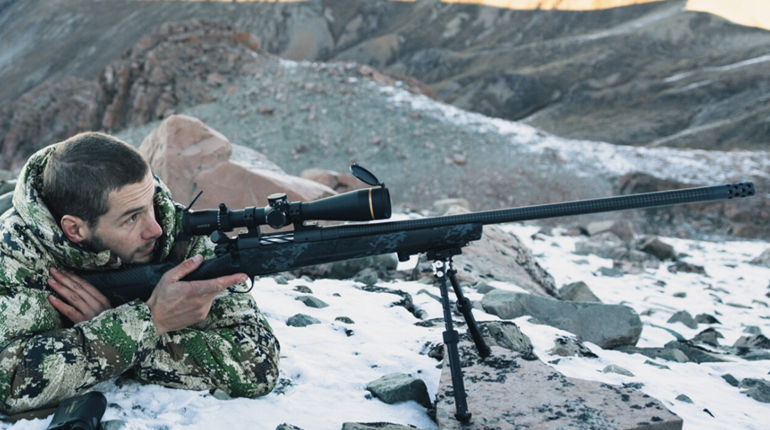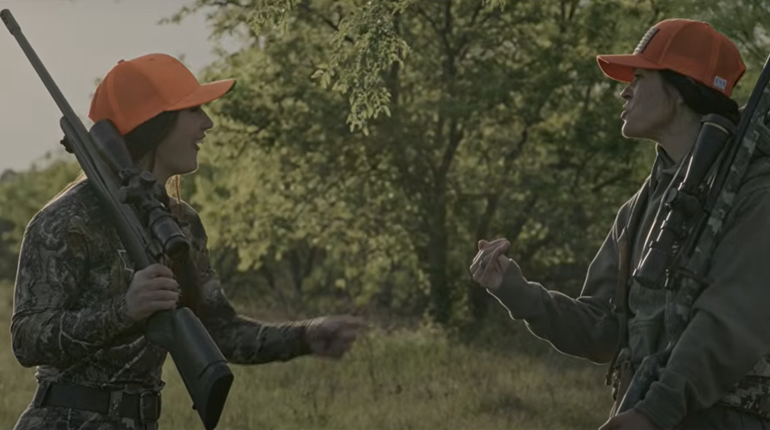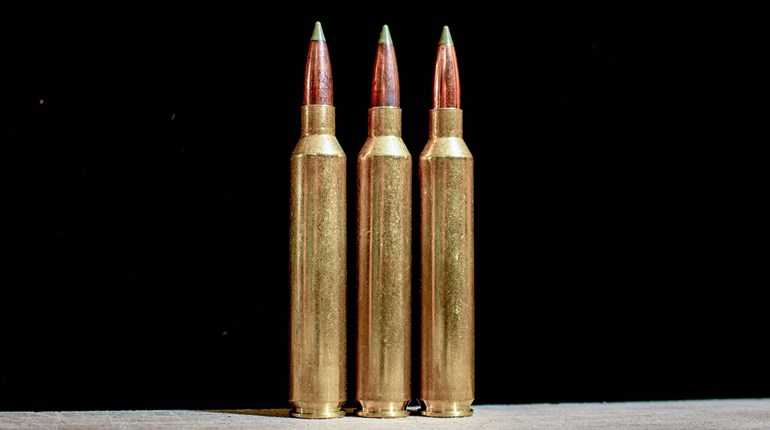

Interest in scout rifles is at an all-time high. Maybe Cooper was just ahead of his time, or maybe shooters are seeing them as bolt-action alternatives to semi-automatic black rifles. Or, quite possibly, it’s the prepper movement and the perceived need for a one-rifle answer to the protection- and hunting-rifle question. Regardless, due to demand, Savage is once again offering a rifle it discontinued twice due to underwhelming sales, which indicates renewed interest in the concept.

The Savage Arms 11 Scout Rifle is built on Savage’s time-tested and trusted Model 11, dual-lug, bolt-action, but there are some features and treatments worth noting. The barrel nut was redesigned to not look like a barrel nut at all. It appears as nothing more than a step in the contour of the barrel. The bolt-handle knob was enlarged, measuring .84 inch in diameter. Also, the bolt is removed from the rifle by depressing a button at the front of the trigger guard and simultaneously pulling the trigger as the bolt is retracted. I consider all of these changes for the better.

Perhaps best of all, the action accepts a detachable magazine. The Savage Model 11 Scout rifle ships with an extended magazine, which is the standard Savage magazine with an expanded polymer base pad. Just forward of the magazine well, there is a retaining lever that fits in a large recess. It can be operated with gloved hands, and these are further positive developments. However, on several occasions I failed to fully seat the magazine—sometimes even after hearing the audible click of the lever lock. As testing progressed, I began slapping the magazine base or visually confirming the magazine was fully seated to eliminate this problem.
It should also be mentioned that this magazine is of the center-feed design. When fully seated, it was completely reliable and feeding was smooth, but the geometry of a center-feed magazine means it must be removed from the rifle to be loaded. This is because the cartridges slip under the feed lips from the front. You cannot load the magazine of the Model 11 Scout while it is in the rifle. I do not consider this an improvement. You can, however, drop a cartridge through the large ejection port onto the top of the empty magazine and close the bolt, thereby chambering a round.

The 18-inch barrel is robust at its origin, but has an aggressive taper to .63 inch at the muzzle, where it’s capped off with a threaded-on, 2 5⁄8-inch-long muzzle brake. I do not believe an almost 8-pound rifle chambered in .308 Win. needs a muzzle brake to reduce recoil, and it without question substantially increases muzzle blast. On the other hand, it does look cool and can be removed for suppressor installation.
Cooper once wrote, “A long-eye-relief telescope doth not a scout rifle make.” However, by today’s commercial and near-universally accepted definition, that’s a prime requirement. The Savage Model 11 Scout rifle allows for mounting a scope forward of the action via a Picatinny rail that attaches to the front of the receiver and to the barrel about 3 inches from the receiver. The rail is 6 5⁄8 inches long and has 17 slots, and it is positioned perfectly for scout-scope mounting. Several scout scopes, including those from Leupold, Burris and Weaver, were mounted in testing and eye relief was found to be spot on with all three. For accuracy testing, I used a Bushnell Elite 3500 2-6X pistol scope, and it too could be positioned forward of the action to provide perfect eye relief mounted in the traditional Scout position.
Savage includes a Williams receiver sight for the requisite irons. This is an excellent choice; it is adjustable for windage and elevation, and the peep disk, with its .09-inch hole, can be unscrewed, which provides a larger .20-inch ghost ring. The front sight is a banded, .37-inch-tall steel post flanked on either side by angled steel wings. This may be the best feature of the rifle for two reasons. The iron sights offer a very crisp and adjustable sight picture, and they are high enough that the cheek weld for using the sights and scope are not tremendously different.

To further the cheek-weld discussion, there is what I consider to be the second-best feature of the Model 11 Scout, the adjustable comb on the stock. This U-shaped device is attached via two bolts that pass through the stock. This is not a quick adjust system—it is designed so you can set the ideal comb height and leave it alone. Due to the nature of the attachment mechanism, you can induce both an alteration of height and one of angle as well. It takes some trial-and-error to get it right, but you should be able to find a single comb height that works for both iron and optical sights. As a tip, mount the optic as low as possible to the rifle.
The sand-colored synthetic stock is pleasing to look at and compliments the black hardware nicely. It’s also trim and carries impressed checkering at the wrist and on the fore-end. The soft, 1-inch buttpad is attached by two long screws that sandwich one .5-inch and two .25-inch spacers between the pad and stock. These spacers can be removed, allowing for a length-of-pull between 12 7⁄8 and 13 7⁄8 inches in quarter-inch increments. Rifle fit is indeed important, so this addition is another good idea.

As expected, the stock is fitted with sling-swivel studs, but not just the standard two. There is one positioned about a half-inch from the butt of the stock, another 2.75 inches back from the fore-end tip and another nearly 7 inches farther to the rear. This allows for the use of a three-point sling, which was something Cooper preferred. It may be easier to appreciate its accommodation than it is to find a commercially available three-point sling. However, with a little ingenuity you can craft your own or have one custom made.

Cooper once wrote, “Those of us who shoot a great deal are well aware that the most important single attribute of either rifle or pistol is trigger action.” The Model 11 Scout uses the Savage AccuTrigger, which incorporates a center lever that must be depressed before the rifle can be fired. It allows for a crisp, creep-free trigger—one that will help you get hits. Like all AccuTriggers, it is adjustable for pull weight.

From the bench, the Savage Model 11 Scout rifle delivered much better than the Cooper-mandated 2-MOA accuracy with every load tested. But, as its name suggests, this is not a rifle to be shot from the bench. It’s intended as a rifle for solving field problems, so the bulk of the shooting was conducted from various unsupported field positions. The rifle balanced well, and even with the forward-mounted scope, the action was smooth and swift to operate—I hit what I shot at. One complaint was the variation in points-of-impact between various loads. None of the four struck the same point; there was a 9-inch variation between the Federal Premium and DoubleTap loads. This is not a big deal if you’re a one-load kind of shooter. Otherwise, you’ll spend some time re-zeroing when you switch ammo.

The sights and scope mount on the Savage Model 11 Scout rifle are exceptional. The trigger, large bolt handle and the adjustable comb and length-of-pull are great features, too. Out of the box, the rifle is a little long and a bit heavy with regard to accepted scout-rifle maximums, but these inconsistencies are more theoretical and should be dependent on the size and physical make up of the shooter. The magazine must be inserted like you mean it, and the muzzle brake seemed more of annoyance than a benefit, even with the suppressor-ready threads. Maybe most importantly, the Model 11 Scout worked, digesting 200 rounds without issue and with way more hits than misses.
As commercial bolt-action, scout-like rifles go, we currently have four manufacturers from which to choose, with suggested retail prices from $777 to $ 1,799. The Savage Scout comes in at a suggested retail price of $819, and, while it does not conform to every requirement set forth by Col. Cooper, that should not deter its consideration. If that one-rifle answer appeals to you, or if you’re looking for an alternative to the AR-15, the Savage is one of the most affordable scout-like options on the market.







































